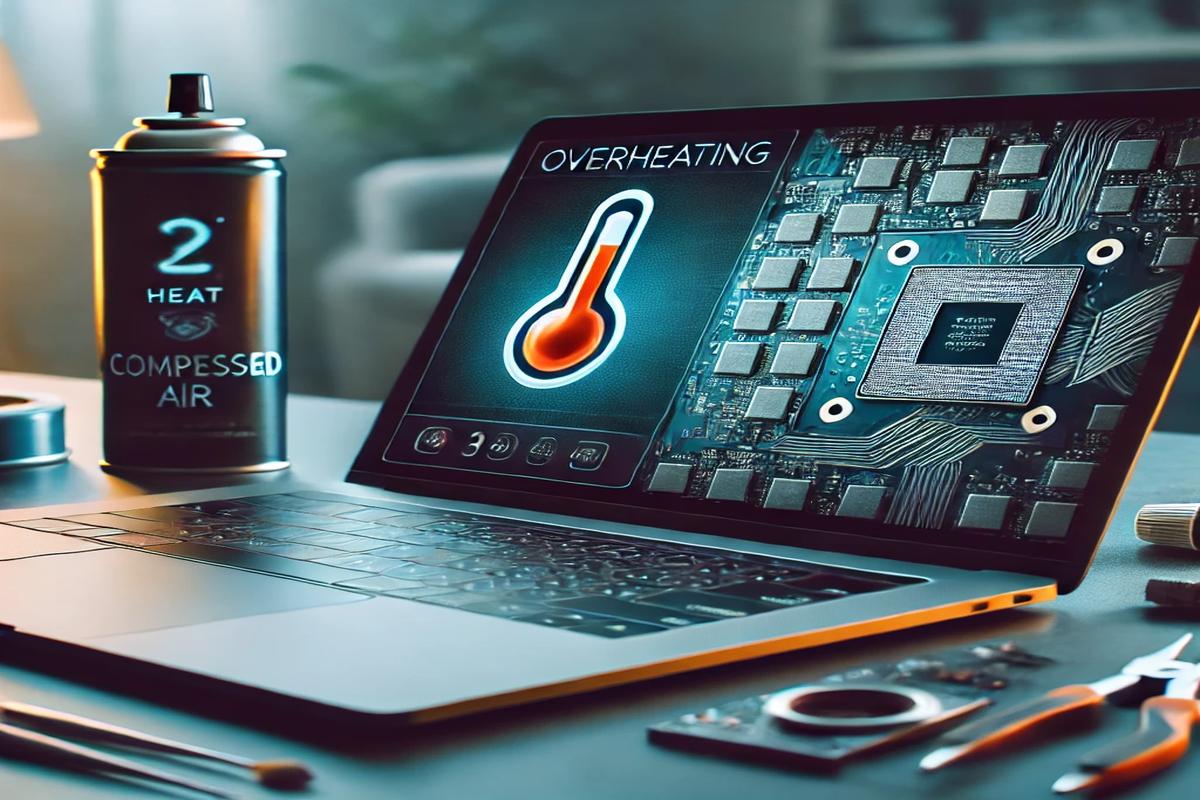In today’s digital age, laptops are essential for work, entertainment, and communication. However, one of the most common issues faced by users is laptop overheating. Overheating not only reduces performance but can also lead to hardware damage. In this guide, we’ll explore the causes of overheating, how to diagnose it, and the most effective ways to fix and prevent heat-related issues.
What Causes Laptop Overheating?
Understanding the root cause of overheating is the first step toward resolving the issue. Below are the most common culprits:
1. Blocked Air Vents
Air vents are designed to allow heat to escape, but dust and debris can clog them over time, restricting airflow.
2. Failing Cooling Fans
If your cooling fans are not spinning or are running slower than usual, the heat generated by your laptop’s processor and graphics card won’t dissipate efficiently.
3. Excessive Background Processes
Running too many applications or processes simultaneously can strain your CPU and GPU, generating more heat.
4. Poor Laptop Placement
Using your laptop on soft surfaces like beds or couches can block its vents, causing heat buildup.
5. Outdated or Overloaded Hardware
Older hardware or using your laptop for resource-intensive tasks, such as gaming or video editing, can contribute to overheating.
How to Diagnose Overheating Issues
Before you can fix the problem, you need to determine if overheating is the issue. Here’s how:
1. Observe Physical Signs
- Hot Surface: If your laptop feels uncomfortably hot to touch, it’s overheating.
- Fan Noise: Overworked fans often produce loud noises.
- Sudden Shutdowns: Laptops may shut down automatically to prevent hardware damage.
2. Monitor Internal Temperatures
Use software like HWMonitor, Core Temp, or SpeedFan to check your laptop’s internal temperatures. Ideally, the CPU should remain under 80°C during heavy use.
3. Look for Performance Drops
Thermal throttling, where the processor reduces its speed to cool down, often results in slower performance.
Effective Solutions to Fix Laptop Overheating
Once you’ve identified the problem, implement the following solutions to resolve overheating:
1. Clean the Air Vents and Fans
Regularly clean your laptop’s vents and fans using compressed air or a soft brush. Be gentle to avoid damaging internal components.
2. Apply Thermal Paste
Over time, the thermal paste that transfers heat from the CPU to the heatsink can dry out. Reapply high-quality thermal paste to improve heat transfer.
3. Use a Cooling Pad
Invest in a laptop cooling pad with built-in fans. This accessory provides additional cooling and improves airflow.
4. Optimize Software Performance
- Close unnecessary programs and browser tabs.
- Use Task Manager (Windows) or Activity Monitor (Mac) to identify and terminate resource-heavy processes.
- Update your operating system and drivers to ensure optimal performance.
5. Adjust Power Settings
Switch to power-saving mode or reduce the maximum CPU usage in your laptop’s settings to minimize heat generation.
6. Elevate Your Laptop
Place your laptop on a hard, flat surface or use a laptop stand to allow proper airflow underneath the device.
7. Replace Faulty Fans
If your cooling fans are malfunctioning, have them replaced by a professional technician.
How to Prevent Laptop Overheating in the Future
Prevention is key to avoiding overheating issues. Follow these tips to keep your laptop cool:
1. Maintain a Clean Environment
- Regularly clean your laptop and workspace to minimize dust accumulation.
- Use your laptop in a well-ventilated area.
2. Monitor Temperature Regularly
Install software that provides real-time temperature readings to catch overheating early.
3. Avoid Overloading Your System
Limit multitasking and close unnecessary background applications, especially during resource-intensive tasks.
4. Use Energy-Efficient Settings
Lower screen brightness and enable energy-saving modes to reduce overall power consumption.
5. Schedule Regular Maintenance
Have your laptop inspected and serviced by a professional annually to ensure all components are in good condition.
When to Seek Professional Help
If none of the above solutions work, or if your laptop frequently shuts down despite normal use, consult a professional technician. Persistent overheating can cause irreversible damage to your hardware, including the motherboard, CPU, and battery.
Conclusion
Laptop overheating is a common but preventable issue. By diagnosing the problem, implementing effective solutions, and adopting preventive measures, you can ensure your device runs smoothly for years to come. A cool laptop is not only more efficient but also has a longer lifespan.
Stay proactive, and don’t let heat damage your investment in technology.
















